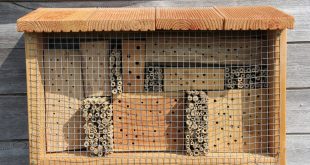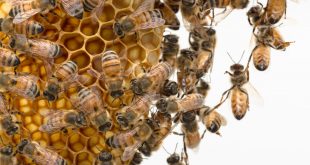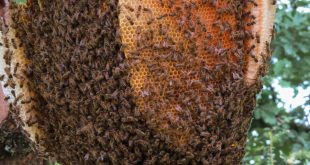The making of a homemade mason bee house is an exciting project that involves simple woodworking that will take just a few minutes to get through with. This is a project that the kids will love to take part in; watching the bees as they construct their nest will definitely give yourself and the kids a sense of fulfillment.
Read More »Bipinamite to Combat Varroosis of Bees Review
A product such as Bipinamite is a special formulation that is widely accepted by beekeepers given its efficacy. It however requires strict adherence to stipulated protocols, otherwise mites may develop some resistance, or the honey bee products may become contaminated with chemical residues. In this article, we'll be taking a detailed look at Bipinamite and how you can benefit from its use.
Read More »Festooning Bees – what’s that about?
Discover the mysterious behavior of festooning bees! Uncover the purpose behind these intricate formations in the hive, where bees link together in chains. Explore their role in comb construction, temperature regulation, and hive stability. Whether you're a novice beekeeper or a bee enthusiast, understanding festooning bees is key to appreciating the marvels of bee society. Dive into this captivating exploration of festooning bees and gain insights into their teamwork and contribution to the hive's success. Unlock the secrets of festooning today!
Read More »Bayvarol Varroa Mite Treatment Review
One of the biggest impacts of varroa mite infestation is colony collapse that is fueled by winter challenges such as food shortage, extremely low temperatures, and predisposition to pests and diseases. If the mites are left uncontrolled, even strong bee colonies can be wiped out in a matter of months. Varroa mites have ferocious appetite and enjoy a shorter life cycle giving them an edge over the honey bee. The Bayvarol strips helps in the diagnosis and treatment of varroa mites. It comprises Flumethrin as its active ingredient. In this article, we will discuss its efficacy and usage.
Read More »Bee Swarm Traps for Honeybees
Since the tools needed in beekeeping are readily available, the only thing that needs to be done is to get the bees. It may sound tricky at first, but there are two ways that you can do to get the bees. First, you can simply purchase the bees from a …
Read More » BeeKeepClub Resources and Guides for Beekeepers
BeeKeepClub Resources and Guides for Beekeepers





